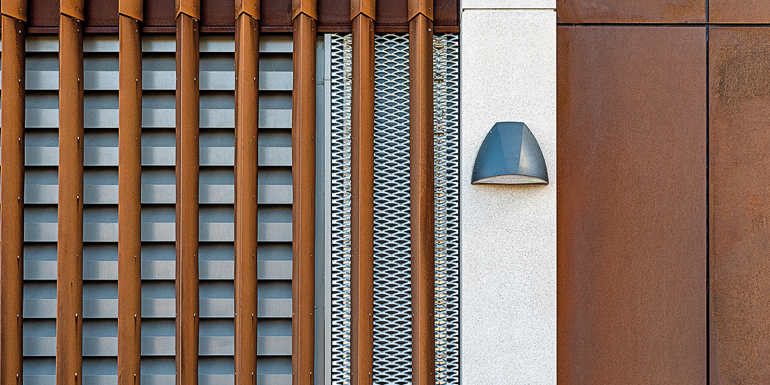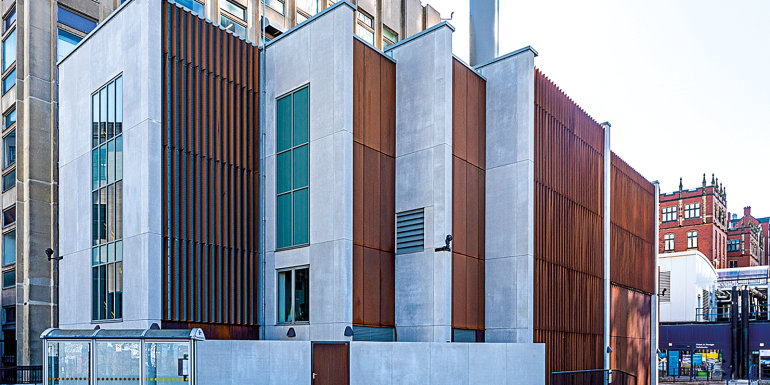Sheffield University’s new electrifying façade

The University of Sheffield’s new Energy Centre Transformer Building has an electrifying façade thanks to Proteus
Sheffield University’s new transformer will provide an uninterrupted power supply to research experiments (which rely on strictly controlled environments), and ensure business continuity to the west of campus. The energy centre will have the capacity to supply power and heat to several key university buildings, as well as lower costs.
The Transformer building itself, created by HLM Architects and built by main contractor Vital Energi, is heavily influenced by the mechanical and electrical equipment that it houses. This is one of the reasons why the architects specified Corten steel rainscreen cladding panels and fins from Proteus Facades.
Proteus HR is a modular rainscreen system that offers a smooth façade with recessed joints. The panels have a lightweight aluminium honeycomb core structurally bonded between two thin gauges of metal. The lightweight nature of this rainscreen system minimises weight loadings on the underlying structure, while achieving strength and rigidity.
The panels, installed by Axis Envelope, were fixed onto a unique system of aluminium carriers and ancillary components. Masking the building’s concrete structure and fitted behind the Corten fins are bespoke 3mm Natural Anodised lightweight Proteus SC Mesh panels, allowing airflow into the mechanical equipment. The system forms a double-wall construction that uses an outer layer to keep out the rain and an inner layer to provide thermal insulation.
The solid Corten Proteus HR cladding panels used on the Transformer Building feature in vertical and horizontal sections of the façade, while the fins wrap vertically over the building. They resemble the external make-up of a power-plant transformer and help to create a powerful aesthetic for the new state-of-the-art energy facility.

University energy supply
Buildings such as the Arts Tower, Firth Court and the Dainton building are supplied with heating by the Veolia District Energy Network. Veolia takes unrecyclable residential waste that would have otherwise been sent to landfill and burns it to create energy to heat a network of buildings in Sheffield.
While the network is a great low-carbon initiative, it has had faults. When the heating has failed in the past, the university relied on diesel boilers, which are hugely expensive and have a high environmental impact. The new CHP (combined heat and power) system in the Transformer building works through the supply of heat from a gas-driven boiler. The heat drives a gas or steam turbine-powered generator to supply energy, and the remaining heat is then used to warm buildings nearby. Gas is currently the only way to provide the reliable and continuous heating required; however, the university acknowledges this isn’t ideal. It has invested heavily in heat network infrastructure to provide the connectivity needed to be able to plug other heat sources into the network in future.
Proteus Facades’ rainscreen cladding panels utilise a range of materials such as aluminium, copper, bronze, brass, stainless steel, zinc and porcelain ceramic.
See bit.ly/3ZAETHI







